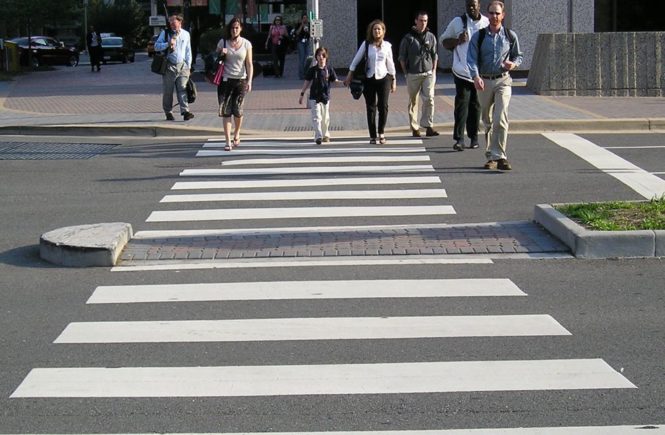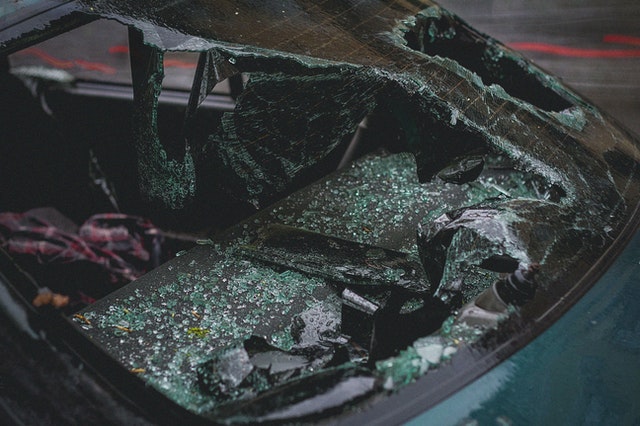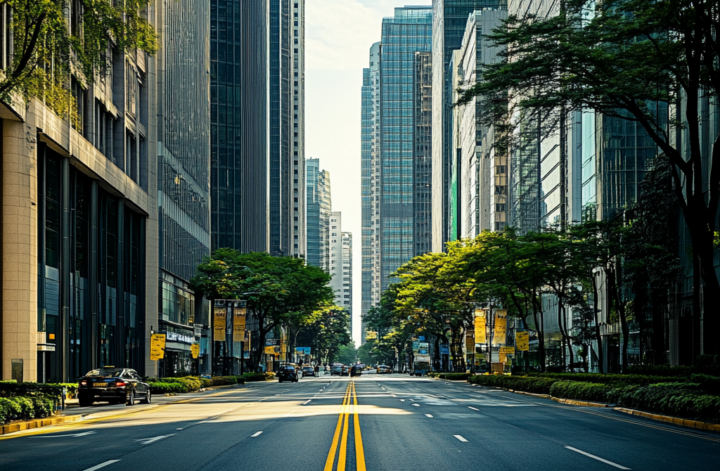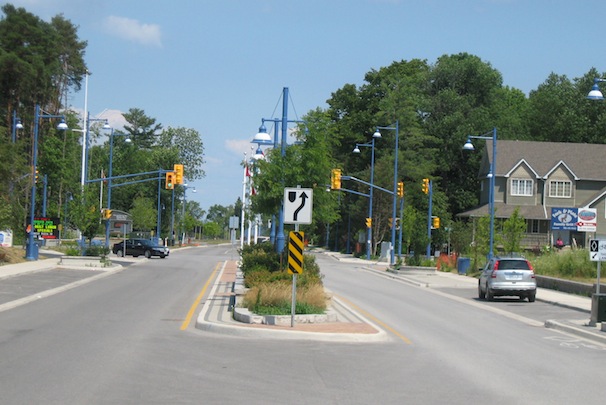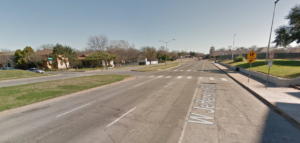
While researching various crosswalk treatments I came across a few research papers which questioned the common practice of using crosswalks as the sole safety treatment at unsignalized intersections. FHWA’s “Safety Effects of Marked vs. Unmarked Crosswalks at Uncontrolled Locations” stood out by taking a nuanced view of such crosswalks based on roadway width, traffic volumes and speeds. An exert from the paper:
When citizens request the installation of marked crosswalks, some engineers and planners still refer to the 1972 study by Herms as justification for not installing marked crosswalks at uncontrolled locations. That study found an increased incidence of pedestrian collisions in marked crosswalks, compared to unmarked crosswalks, at 400 uncontrolled intersections in San Diego, CA. Questions have been asked about the validity of that study, and the study results have sometimes been misquoted or misused. Some have misinterpreted the results of that study. The study did not conclude that all marked crosswalks are unsafe, and the study also did not include school crosswalks. A few other studies have also tried to address this issue since the Herms study was completed. Some were not conclusive because of their methodology or sample size problems, while others have fueled the disagreements and confusion on this matter.
Furthermore, most of the previous crosswalk studies have analyzed the overall safety effects of marked crosswalks but did not investigate their effects for various numbers of lanes, traffic volumes, or other roadway features. Like other traffic control devices, crosswalks should not be expected to be equally effective or appropriate under all roadway conditions.
Marked crosswalks alone (i.e., without traffic-calming treatments, traffic signals and pedestrian signals when warranted, or other substantial crossing improvement) are insufficient and should not be used under the following conditions:
•Where the speed limit exceeds 64.4 km/h (40 mi/h).•On a roadway with four or more lanes without a raised median or crossing island that has (or will soon have) an ADT of 12,000 or greater.•On a roadway with four or more lanes with a raised median or crossing island that has (or soon will have) an ADT of 15,000 or greater.
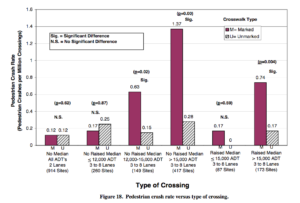
ITE recently put out a great guide on unsignalized intersection improvements planners and engineers should reference for roadway projects.
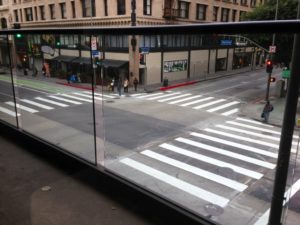
As for crosswalk styles, continental crosswalks seem to be favored for traffic safety and their relative low cost of installation. Los Angeles and San Francisco have installed many of these in their downtowns. FHWA also recommends continental crosswalks for their driver visibility benefits. For textured treatments such as stamped & colored asphalt/concrete, I’m of the opinion these should be saved for the interior of intersections or mid block locations. Providing maximum crosswalk visibility and ease of maintenance should be a public safety priority in roadway design. Textured & colored pavements within crosswalks often provide less visibility and higher maintenance costs than simple white paint.
Crosswalk upgrades are one of the least expensive and least complex safety improvements out there, but it’s still surprising how many cities still get them wrong. Adding a few simple safety measures according to FHWA guidance can go a long way in making pedestrian crossings safer and more comfortable for people.
Special thanks to Michael R. King for the featured image on this post.


